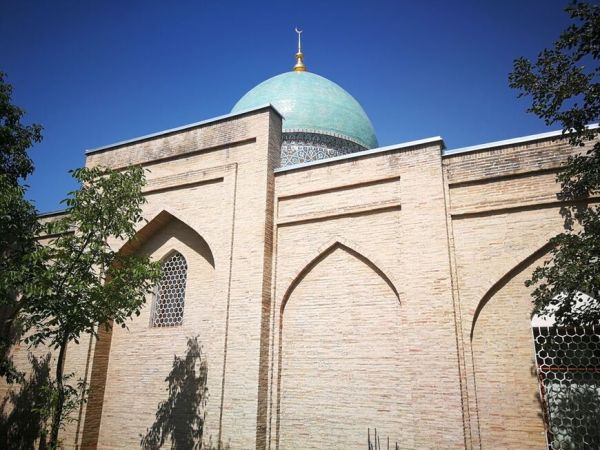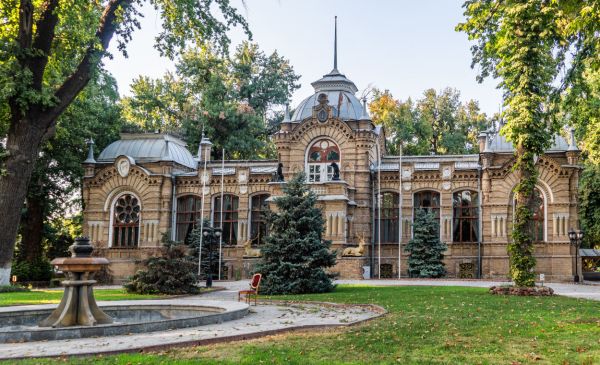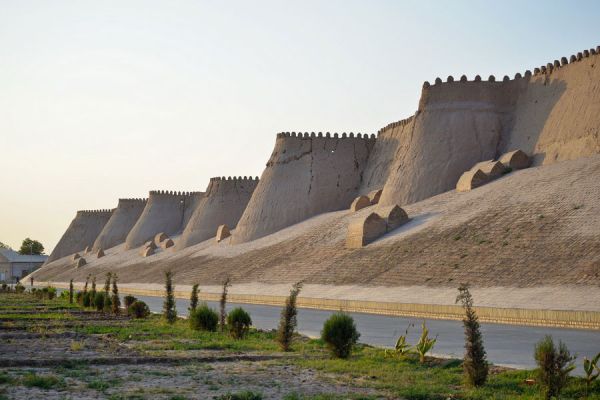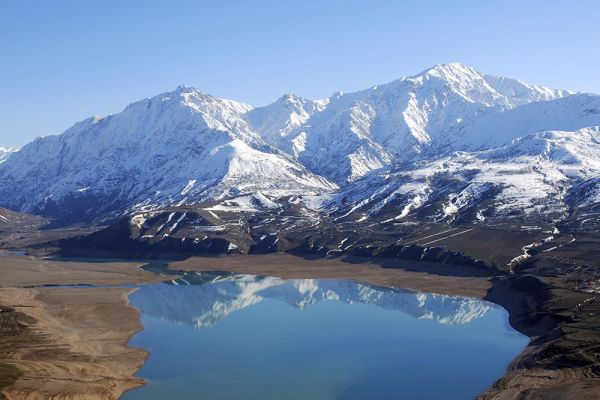Gissar Mountain Juniper State Reserve
The Gissar Nature Reserve is located in the Kashkadarya region of Uzbekistan on the western slopes of the Gissar Range in the altitude range from 1,750 to 4,349 m above sea level. From the east and southeast, the reserve borders on the crest of the Gissar ridge with the Surkhandarya region of Uzbekistan, in the north - with Tajikistan. The Gissar Reserve was established in 1983 on the basis of the merger of two independent mountain reserves – Kyzylsusky and Mirakinsky. Due to the unification of the territories of two significant nature reserves, this is currently the largest of the reserves in Uzbekistan. Its area is 80986.1 hectares.
There are 4 separate geographical areas in the reserve.
The Tashkent site is located in the basin of the Kyzyldarya River in the range of heights from 1800 to 4000 m above sea level and covers an area of 30094 hectares. One of the characteristic features of the site is the presence of outcrops of variegated gypsum–bearing rocks - red sandstones, clays, shales and a powerful tectonic fault along the left bank of the Kyzyldarya River, running from the sources to the border of the reserve in the vicinity of the village of Tashkent.
The Mirakinsky site is located in the northwestern part of the reserve at an altitude of 1800 to 4300 m above sea level. The total area is 11,821 hectares. Its terrain is mountainous, heavily dissected with numerous impassable river valleys and rocky scree, high-altitude meadows and snowfields.
The Gilan and Tankhyz sections are the highest of all the sections and are located in the basin of one of the largest rivers in the reserve, the Aksu and the Tankhyzdarya rivers, in the altitude range from 2500 to 4300 m.above sea level. The total land area is 30094 hectares. The predominant landscapes are high-altitude, mainly alpine meadows, large-scale talus and rock formations. The largest glacier in Uzbekistan, the Severtsov Glacier, is located in the mountainous part of the site.
The climate in the Gissarsky Reserve is sharply continental. Spring is quite long – from March to May, rainy, with unstable weather. Summer comes at the end of May – in June, but in the upper belts of the mountains – in the subalpine and Alpine zones – snowmelt and the appearance of the first primroses can be observed both in June and in July. Summers in the mountains are cool, but mostly clear and sunny. At the same time, when summer temperatures reach +35-40 °C on the plain below, daytime temperatures fluctuate between +15-25 °C at the top, and there are cases of summer snowfall. Frosts occur at night. Average January temperature – - 10- - 15OC, July +10-12o C. Annual precipitation averages 750-800 mm per year, most of it falls in winter and spring. Thunderstorms and heavy rains are quite common in summer, and sometimes snow falls. The snow cover in the upper areas of the reserve does not melt, and the tongues of the Severtsov Glacier with a thick layer of long-term ice are located on the territory of the reserve.
The flora of the reserve is quite typical for the mountains of Central Asia and is very rich in species composition. At least 1,500 species of vascular plants are known for the entire territory of Western Hissar within the Kashkadarya region, more than half of which make up the flora of the reserve. The main forest-forming species in the reserve are two types of juniper. Western Hissar is very poor in tree and shrub species, there are only about 60 species, except junipers (Zeravshan arch and hemispherical arch), maple trees (Turkestan, fluffy and Semenov), Sogdian ash, Pontic hawthorn, Turkestan mountain ash, Sivers apple, oriental plum, narrow-leaved loch, Bukharian almond, Regel pear. The rest of the breeds are either real shrubs or represented by bush-like forms. Pontic hawthorn, Turkestan mountain ash, wild rose, honeysuckle, and barberry can be found everywhere in the undergrowth. Holly, geranium, cousinia, as well as krestovnik and ram are often found – favorite food objects of mountain goats and marmots.
The Gissar Nature Reserve is home to 2 species of fish, 19 species of amphibians and reptiles, 169 species of birds, including 103 species of nesting birds and 28 species of mammals. The reserve is home to a number of species listed in the Red Book of the Republic of Uzbekistan (2003). These include the white-capped bear, the Iranian otter, the snow leopard and the Turkestan lynx, the dwarf eagle, the golden eagle, the bearded man, the kumai, and the saker falcon. Marinka (Schizothorax intermedius Mcglell) is noted in almost all large rivers of the reserve with clear water, trout is less common.
The road to the reserve itself is divided into several routes, since you can get to the Tashkent (Kyzylsui) section through the Yakkabag district center, and to the Mirakinsky, Gilansky and Tankhaz sections through the Miraki district center. The nearest distance from Shakhrisyabz to the borders of the reserve (its various sections) ranges from 70 to 90 km.
Tourist sites and attractions of the Gissar Nature Reserve and its surroundings.
There are many tourist sites on the territory of the reserve. The most interesting ones are:
- Sacred Mount Hazret Sultan;
- Tamerlane's Cave;
- Fossilized dinosaur footprints;
- Suvtushar Waterfall;
- Kyzylshavar karst plateau;
- Khojakarshavar High Mountain Plateau;
- High mountain lakes of Dzhanka;
- Kalasai Grand Canyon;
- Zarmass Canyon;
- Picturesque panoramas of the Hissar mountains with the peaks of Khojaakchaburun (3855 m.), Khojapiriyah (4425 m.);
- Severtsev Glacier;
- Picturesque mountain villages of Gilan, Zarmas, Kul;
- Summer pastures of Kyzylgaz.
Attention!
Some parts of the territory of the Gissar Nature Reserve are located in the border area with Tajikistan. Therefore, to visit the Gissar Nature Reserve, it is necessary to obtain special permits from the State Committee for Nature Protection and the State Border Protection Committee of the Republic of Uzbekistan.






